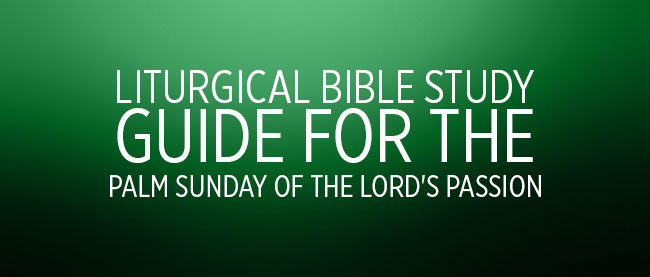Introduction
Passion week ends our celebration of Lent. Our lenten preparations have been focused on improving our response to God’s call so that we, His children, will be ready to come home and live for all eternity. Jesus, our eldest brother, has showed us how to live His life so that we can gain eternal life. Our readings today show us how Jesus freely became the eternal perfect sacrifice – the one sacrifice which could open the gates of heaven so that we could have our sins forgiven and forgotten. The sacrifice instituted the New Covenant with God; the covenant in which we are no longer God’s slaves but His children. As with all covenants, this covenant is sealed with a meal, a meal in which all parties partake and which is offered to God. The offering to God is described in Revelation 5:6 by John: “Then I saw standing in the midst of the throne and the four living creatures and the elders a Lamb that seemed to have been slain.” The meal in which we partake is the Holy Eucharist promised by Jesus at Capernaum “Unless you eat the flesh of the son of man and drink His blood you have no life within you. Whoever eats my flesh and drinks my blood has eternal life, and I will raise him on the last day.” (John 6:53-53). This meal was provided for us by Jesus at the Last Supper.
Procession Gospel – Matthew 21:1-11
This is Jesus’ triumphal entry into Jerusalem. Jesus had visited Jerusalem various times before, but He never did so in this way. Previously He had not wanted to be recognized as the Messiah; He avoided the enthusiasm of the crowd; but now He accepts their acclaim and even implies that it is justified, by entering the city in the style of a peace-loving king. Jesus’ public ministry is about to come to a close: He has completed His mission; He has preached and worked miracles; He has revealed Himself as God the Father wished He should; and now in this triumphal entry into Jerusalem He shows that He is the Messiah.
1st Reading – Isaiah 50:4-7
Our first reading is from the third suffering servant song of the prophet Isaiah. This song tells how the Messiah will be treated when He comes.
2nd Reading – Philippians 2:6-11
Our second reading has been called “The Christ Hymn” because of the distinctive qualities of this passage. It has a rhythmic character and a use of parallelism which have led to the view that Paul is quoting a hymn composed independently of Philippians (possibly originally in Aramaic). The hymn has a basic twofold structure: verses 6-8 describe Christ’s abasement; while verses 9-11, His exaltation.


